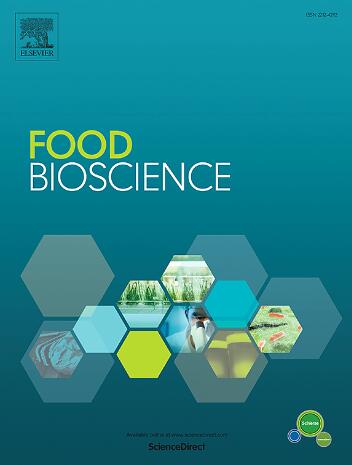Erythritol disrupts neurodevelopmental signaling and behavior in zebrafish via shh/nodal and notch pathways
IF 4.8
1区 农林科学
Q1 FOOD SCIENCE & TECHNOLOGY
引用次数: 0
Abstract
The safety of erythritol, a widely used zero-calorie sugar substitute, concerning neurodevelopment is yet to be fully understood. In this study, we utilized EmbryoNet, a deep learning-driven embryonic phenotyping platform, to assess the neurodevelopmental toxicity of erythritol at concentrations of 3, 5, and 7 mg/mL, which adhere to FDA standards. Our findings demonstrated specific disruptions in the shh and nodal signaling pathways, critical regulators of vertebrate neural patterning. Experimental validation revealed that erythritol exposure led to microcephaly, reduced neural stem cells, and increased brain cell apoptosis in larvae. Mechanistically, reduced ddx3x gene expression in zebrafish inhibited the expression of Notch ligands (dll4, jag1a) and receptors (notch1b, notch2) by disrupting their interactions with crebbp, thereby triggering a range of effects. These include neurotransmitter disorders such as a GABA/glutamate imbalance (up-regulation of gad1b and down-regulation of gabra2a expression) and dopamine metabolic abnormalities (up-regulation of dat and down-regulation of comt gene expression). Behavioral analyses further corroborated these findings, showing erythritol-induced abnormalities including heightened thigmotaxis, stereotyped repetitive behaviors, and increased locomotor activity. These findings highlight the potential of erythritol to induce neurodevelopmental impairments through multifaceted interactions, implicating both autism-related genes (nomo1, shank3a, shank3b, tanc2a, tanc2b) and ADHD-related genes (lphn3.1, lphn3.2, per1b). This study underscores the harmful neurodevelopmental consequences of erythritol and establishes a framework for its rational and safe utilization.
赤藓糖醇通过shh/淋巴结和notch通路破坏斑马鱼的神经发育信号和行为
赤藓糖醇是一种广泛使用的零热量糖替代品,其对神经发育的影响尚不完全清楚。在这项研究中,我们利用胚胎表型平台EmbryoNet深度学习来评估赤藓糖醇在3、5和7 mg/mL浓度下的神经发育毒性,这些浓度符合FDA标准。我们的发现证明了shh和节点信号通路的特定破坏,这是脊椎动物神经模式的关键调节因子。实验证实赤藓糖醇暴露会导致幼虫小头畸形、神经干细胞减少和脑细胞凋亡增加。机制上,斑马鱼中ddx3x基因表达的减少通过破坏Notch配体(dll4, jag1a)和受体(notch1b, notch2)与crebbp的相互作用来抑制Notch配体(dll4, jag1a)和受体(notch1b, notch2)的表达,从而引发一系列效应。这些包括神经递质紊乱,如GABA/谷氨酸失衡(gad1b上调和gabra2a表达下调)和多巴胺代谢异常(dat上调和comt基因表达下调)。行为分析进一步证实了这些发现,显示赤藓糖醇引起的异常包括大腿收缩性增强、刻板重复行为和运动活动增加。这些发现突出了赤藓糖醇通过多方面的相互作用诱导神经发育障碍的潜力,涉及自闭症相关基因(nomo1, shank3a, shank3b, tanc2a, tanc2b)和adhd相关基因(lphn3.1, lphn3.2, per1b)。本研究强调了赤藓糖醇对神经发育的危害,并为其合理安全使用建立了框架。
本文章由计算机程序翻译,如有差异,请以英文原文为准。
求助全文
约1分钟内获得全文
求助全文
来源期刊

Food Bioscience
Biochemistry, Genetics and Molecular Biology-Biochemistry
CiteScore
6.40
自引率
5.80%
发文量
671
审稿时长
27 days
期刊介绍:
Food Bioscience is a peer-reviewed journal that aims to provide a forum for recent developments in the field of bio-related food research. The journal focuses on both fundamental and applied research worldwide, with special attention to ethnic and cultural aspects of food bioresearch.
 求助内容:
求助内容: 应助结果提醒方式:
应助结果提醒方式:


